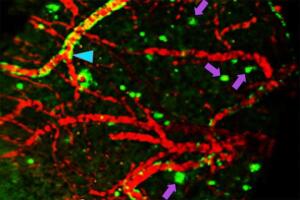by
Lauren Dubinsky, Senior Reporter | November 04, 2016

Shows promise in mice experiments
Researchers at Washington University School of Medicine in St. Louis have developed a PET imaging agent called Fluselenamyl that can potentially identify signs of early-stage Alzheimer’s disease. Since it’s more sensitive, and likely more specific, it can detect amyloid beta better than the current imaging agents on the market.
"Using this compound, I think we can reduce false negatives, potentially do a better job of identifying people in the earliest stages of Alzheimer's disease and assess the effects of treatments,” Vijay Sharma, professor of radiology, of neurology and of biomedical engineering at the university, said in a statement.
Amyloid plaques can either be diffuse or compact — diffuse plaques are thought to be benign because they’re found in the brains of patients with and without Alzheimer’s. However, Sharma believes that these plaques might actually signify the earliest stages of the disease.



Ad Statistics
Times Displayed: 57652
Times Visited: 1710 Ampronix, a Top Master Distributor for Sony Medical, provides Sales, Service & Exchanges for Sony Surgical Displays, Printers, & More. Rely on Us for Expert Support Tailored to Your Needs. Email info@ampronix.com or Call 949-273-8000 for Premier Pricing.
This is largely an unexplored area of research. The FDA-approved agents don’t detect diffuse plaques, so there hasn’t been a reliable imaging agent available to investigate this in animal models or patients until now.
Sharma and his team used human amyloid beta proteins to show that Fluselenamyl can bind to those proteins two to 10 times better than each of the three FDA-approved imaging agents. That means that Fluselenamyl can detect much smaller clumps of the protein and potentially spot brain changes associated with Alzheimer’s sooner.
The team then used Fluselenamyl to stain brain slices from patients who died of Alzheimer’s and those who died from other causes. The brain slices from those with Alzheimer’s were found to contain plaques, but the control group’s brain slices did not.
A radioactive atom was placed into the agent and there was only a small interaction between Fluselenamyl and the healthy white matter in the brain slices. The other imaging agents are known to bind indiscriminately to the white matter, which can lead to false positive scans.
The team also revealed that when Fluselenamyl and the radioactive atom are intravenously injected into mice, it can cross the blood-brain-barrier and bind to any plaques in the brain, and be detected by PET. Fluselenamyl is excreted from the brain, and then the body, in the mice without plaques.
Going forward, Sharma plans to test the agent on human patients. He has already submitted an application to the National Institutes of Health for a phase 0 trial to determine if Fluselenamyl is safe to be used in humans.
He wants to evaluate patients with very mild symptoms and PET scan results that indicate that they don’t have Alzheimer’s in order to determine if Fluselenamyl can diagnose them. He hopes that one day the industry will use Fluselenamyl to identify those who are going to be at risk for developing the disease.

